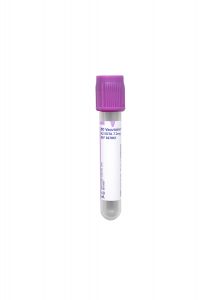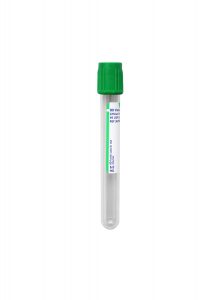Special Communication
Changes to Cyanide, Blood (CYANID) Testing
Specimen Requirements
Volume:
4 mL, whole blood
Minimum Volume:
3 mL, whole blood
Specimen Container (Primary):
Green Sodium Heparin Tube
Specimen Container (Primary):
Green Lithium Heparin Tube
Alternative Container:
Lavender BD Hemogard™ K2EDTA Tube

Transport:
Ambient (room) temperature
Patient Preparation:
Timing of specimen collection is dependent on the time of exposure; test upon presentation to hospital.
Stability
Ambient
72 hours, if tightly-capped
Refrigerated
Unacceptable
Frozen
Unacceptable
Methodology
Quantitative Colorimetric
Reference Range
Non-smoker: < 20 μg/dL
Smoker: < 40 μg/dL
Days Performed/Reported
Performed
Sunday, Wednesday, and Friday
Turnaround Time
2–6 days
Special Information
Timing of specimen collection is dependent on the time of exposure; test upon presentation to hospital.
This test is New York DOH approved.
Clinical Information
This test is used to monitor cyanide exposure. Cyanide poisoning can cause hypoxia, dizziness, weakness, and mental and motor impairment.
Elevated cyanide concentrations rarely indicate toxicity for patients on nitroprusside therapy. Thiocyanate should be monitored in patients on nitroprusside therapy for potential toxicity. Toxicity may occur with long-term nitroprusside use (longer than 7–14 days with normal renal function, and 3-6 days with renal impairment at greater than 2 μg/kg/min infusion rates).
Thiocyanate levels may be monitored on an every-other-day basis to assess potential thiocyanate toxicity and to indicate possible adjustments in dosage.
Any additional information will be included in a future Technical Update. If you have any questions about these changes, please contact Client Services for assistance.


